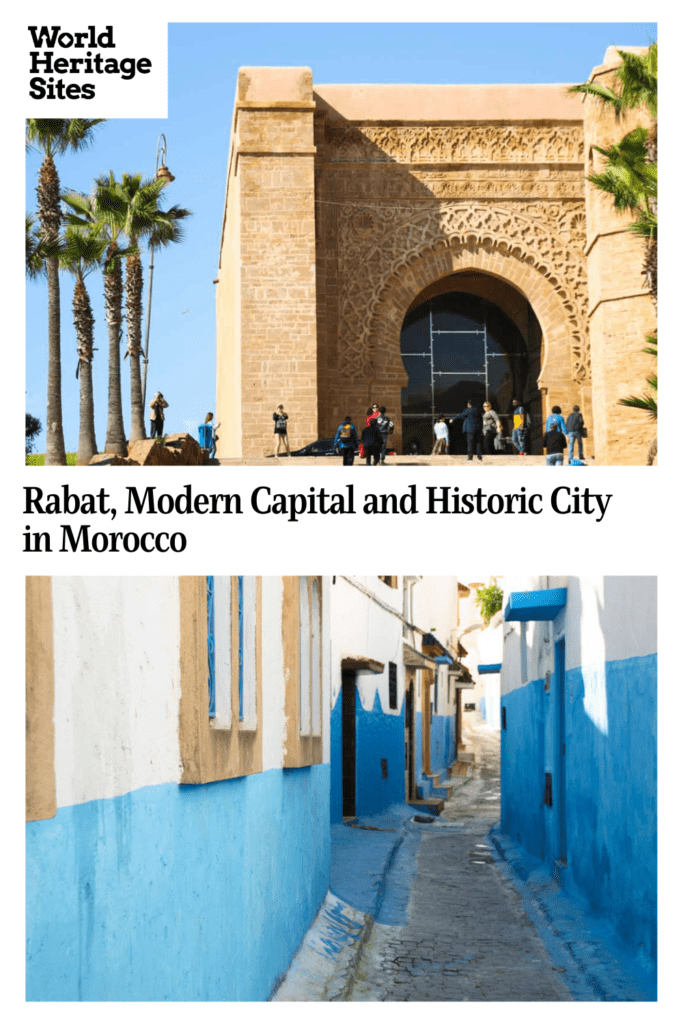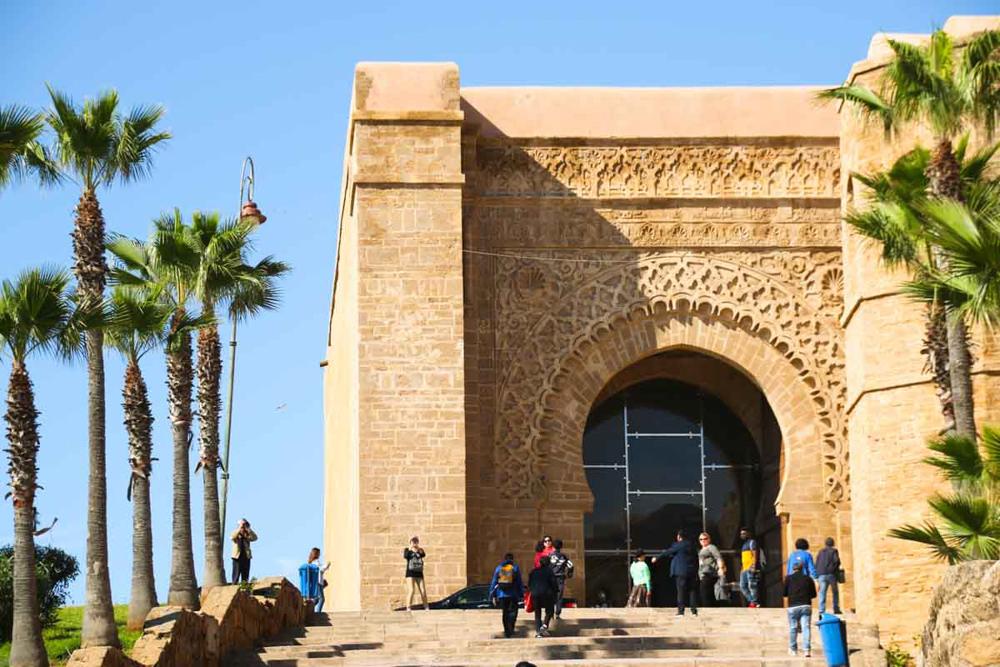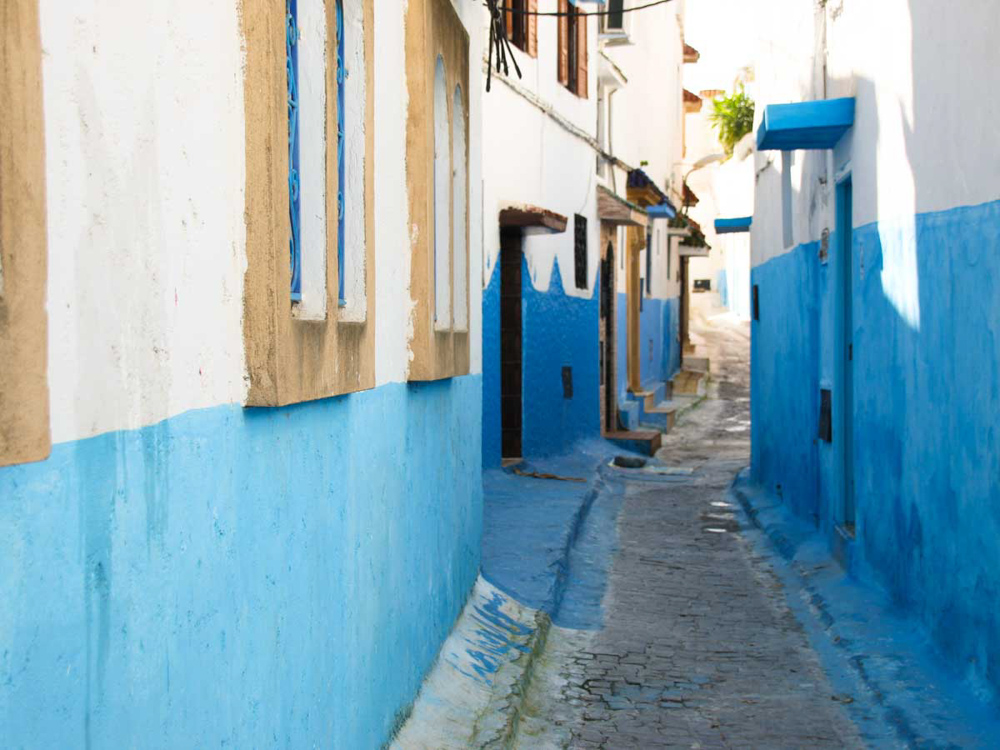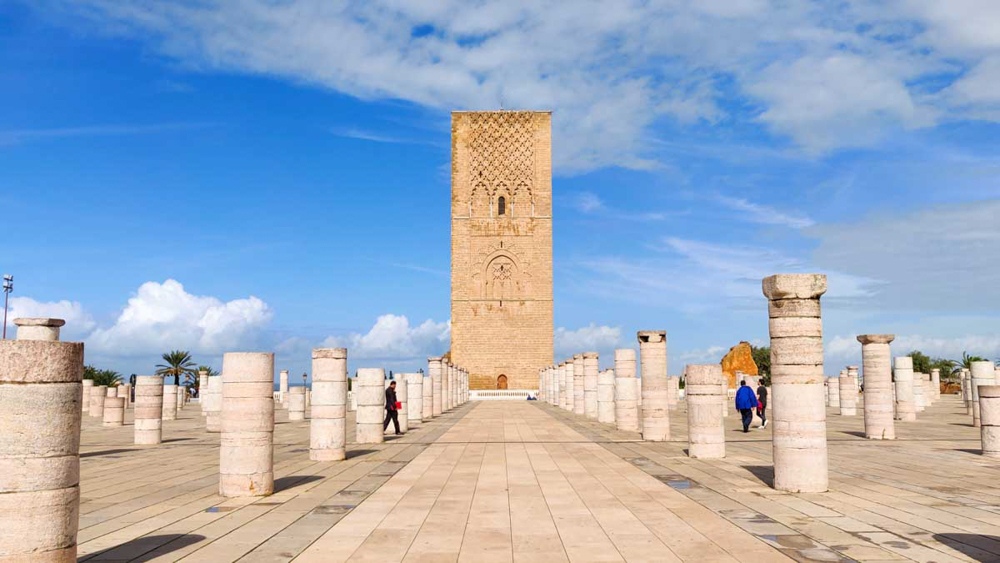Rabat, Modern Capital and Historic City: a Shared Heritage
By Eva Westerling
What is Rabat?
Rabat is the capital city of Morocco, home to the main residence of the king as well as the government. It is one of four Imperial cities, which have all been the capital at one point in time. Rabat was made capital under the French, who occupied Morocco from 1912-1956.
Disclosure: This article contains affiliate links. Making a purchase through an affiliate link will mean a small commission for this website. This will not affect your price. Privacy policy.

The city has a few distinct parts that are worth mentioning. The oldest is the Kasbah des Oudayas, a fortified town on the corner between river mouth and ocean. It was built in the 12th century and is the most popular sight in Rabat.
The medina surrounds the Kasbah on the land side and was built during the following centuries. And lastly, the Ville Nouvelle, built by the French between 1912 and ca. 1930.
Why is Rabat a UNESCO World Heritage site?
What makes Rabat special and worth the UNESCO listing, is the combination of the traditional Moroccan old parts of town with the modern city built under the French. Or, as UNESCO puts it:

“…the modern city of Rabat shows respect for, and draws inspiration from, the earlier Arabo-Muslim heritage. It bears outstanding testimony to the diffusion of European ideas in the early 20th century, their adaptation to the Maghreb, and in return the influence of local, indigenous styles on architecture and decorative arts.”
“The city constitutes an outstanding and fully realized example of modern town planning, for a 20th century capital city…” and “incorporates the cultural values of the past in the modernist project” for an “outstanding and refined urban ensemble.”

What can you expect on a visit to Rabat?
Visiting Rabat gives an interesting insight into Moroccan history. Especially the changes brought on by the French occupation are very visible in Rabat.
The main sights in Rabat you should definitely visit are:
- The Kasbah des Oudayas: the oldest part of town. Very photogenic with its blue and white walls, small alleyways and views over the river and ocean.
- The medina: great for shopping and people watching.
- The Hassan Tower: the former king Yousself al Mansour started to build the biggest mosque in Africa in the year 1192. After his death construction was stopped and major parts were subsequently destroyed in an earthquake.
- The Mausoleum of Mohammed V: opposite the Hassan Tower, one of the very few Muslim Mausoleums open to non-Muslim visitors.
- The Ville Nouvelle: go for a stroll around the new part of town with its French inspired avenues, buildings and parks. Get a coffee and watch the modern city life pass you by.

Is Rabat worth visiting?
Yes, most definitely! It is one of the most underrated cities in Morocco, and it’s where you can still witness real Moroccan life. What I loved most was the fact that Rabat is not overly touristy. You can wander around without any harassment, take your time taking photos or shopping for souvenirs.
What sorts of travelers would like Rabat?
- Independent travellers looking for authentic experiences
- Travellers interested in photography, as there are so many photogenic spots
- History buffs: there is so much to see and learn here
- Single female travellers, as it is one of the safest cities in Morocco
Tips for visiting Rabat
You can make it a day trip on your way up north or stay a couple of nights in one of the beautiful Riads in the medina.
While you’re in northern Morocco, also visit the Medina of Tétouan, another UNESCO World Heritage site.
Look for accommodations in the medina by clicking on the map below:
Where is Rabat?
Rabat is located on the Atlantic coast of Morocco, around an hour northeast of Casablanca. The best way to get to Rabat is by train. It takes around 1 hour from Casablanca, 3.5-4 hours from Marrakech and around 3 hours from Fes.
In the city you can either walk, take the tram or the petit taxis that you can find all over the city.
Have you been to Rabat? If so, do you have any additional information or advice about this UNESCO World Heritage site? Please add your comments below!
